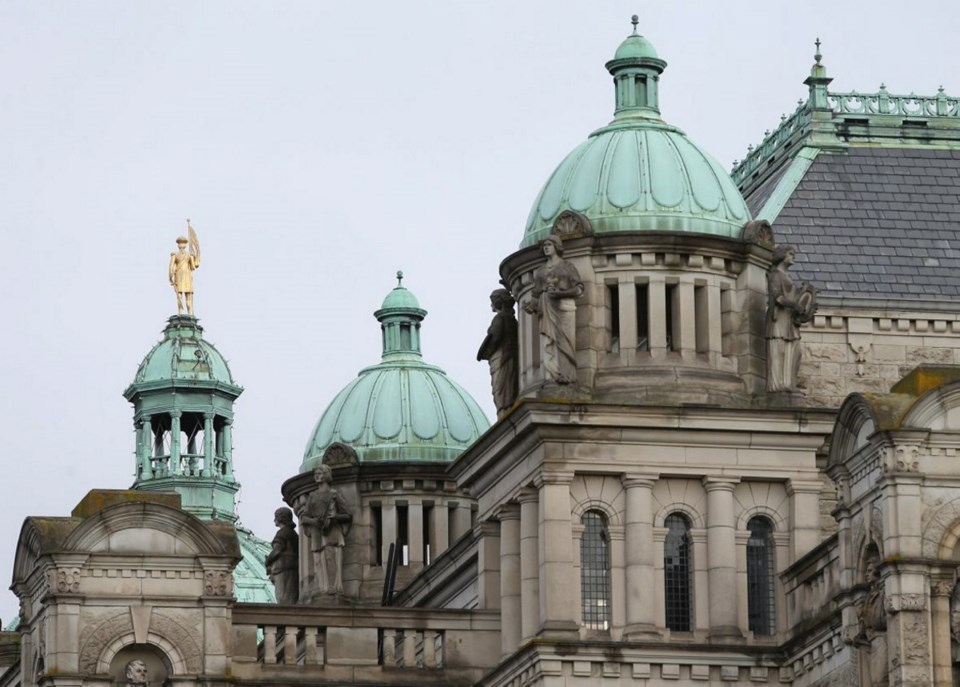 It’s time to start considering the prospect of “Premier John Horgan.”
It’s time to start considering the prospect of “Premier John Horgan.”
The B.C. Liberals come out as the leaders after the final count of the election returns, with 43 seats to the NDP’s 41 and the Greens’ three. But that’s not the same as winning it. The results announced Wednesday mean any form of NDP and Green cooperation on key votes could shuffle the Liberals over to the Opposition side of the legislature.
Barring some improbable manoeuvre, the only way the Liberals can stay in power would be through an arrangement with the Greens. Premier Christy Clark said she has a plurality of seats in the house and a responsibility to form a government. But of the two options the Greens have, siding with the NDP looks more likely. Green Leader Andrew Weaver would have to overlook huge parts of the Liberal platform and record, and a lot of his own positions, to support Clark in office.
Nonetheless, Liberals and NDP are both huddling with the Greens — separately — to discuss options. Weaver said Clark would have to sell any hypothetical deal between the two parties to her own caucus, which could be challenging.
So an NDP government, relying on three crucial Green votes for survival, is an even stronger likelihood now than it was after the interim count. The minority situation means the election platform the NDP ran on would have to be revised to meet Green Leader Andrew Weaver’s expectations. With one exception, that’s not that big a deal. On several key issues the two parties are almost on the same page. Weaver’s specific demand for official party status can be easily accommodated.
The biggest adjustment for the NDP will be the realization that their platform is based on having four years in power, which is a doubtful proposition in such a close minority situation. Big parts of their lengthy platform are devoted to structural changes to various programs and policies, many of them staged over one term or even longer. That’s time they may not have.
The two issues that are now at the top of the priority list — financing and electoral reform — are both complicated propositions that will eat up a lot of time. The most far-reaching one is changing the voting system. That’s the rabbit hole Prime Minister Justin Trudeau promised to explore and took a few steps down, before abandoning the idea last year. It’s an immensely complicated topic made even more complex by a crucial difference between the NDP and Green stances, the one exception to all the commonalties.
The NDP is — or was — committed to holding a referendum on whether voters wanted to change to a proportional voting system. “We’ll ensure all B.C.’s regions are all represented fairly. And, we will campaign for the yes side.”
The Greens promised in their platform to introduce it directly. Weaver later told the Times Colonist there would be a subsequent referendum after an election using the new system to determine if voters wanted to retain it.
There is a never-ending debate about the advantages and disadvantages, but the one indisputable fact is that proportional representation gives a huge boost to parties that get smaller shares of the vote, not concentrated in enough ridings to elect more than a handful of MLAs. It took the Greens more than 20 years to get three people elected. Changing to proportional representation could increase that count easily, and secure it.
So an NDP leader agreeing to a unilateral change would be agreeing to a system that makes minority governments much more likely.
Horgan said Tuesday he still feels strongly a referendum is needed for such a change. But the topic is under discussion. He disputed Clark’s statement that she has a responsibility to form a government, saying the majority of voters opted against her. The implicit message was — get out of the way.
Tellingly, Weaver also disputed Clark’s position, saying she only has a responsibility to try to gain the confidence of the house. Then she could try to form a government, he said.
Subject to another few days of meetings, it looks like if Clark tries to form a government this summer, she will fail. And if she concedes that point, the NDP and the Greens will be ready and waiting to take over, with a safety margin of precisely one vote.



